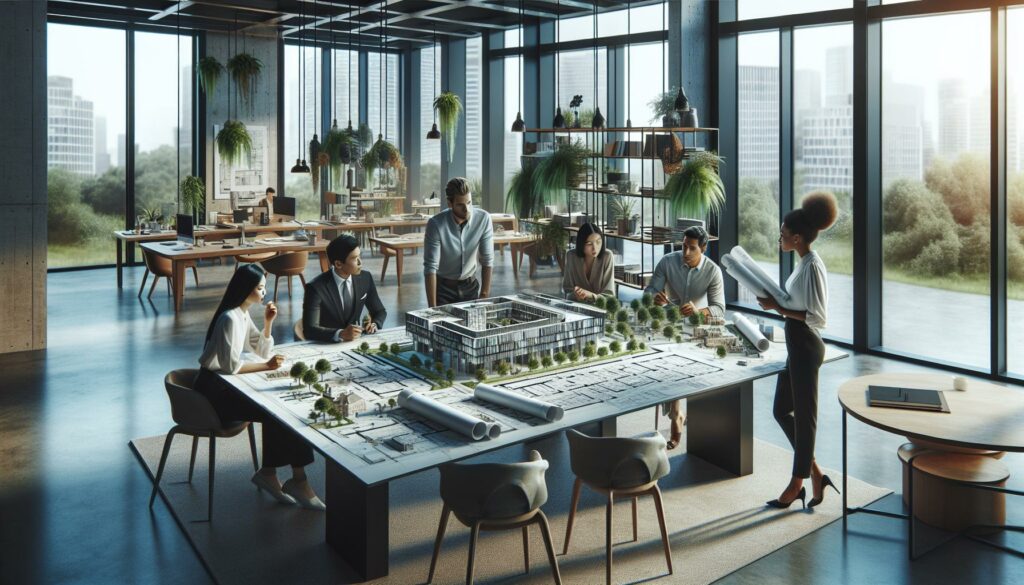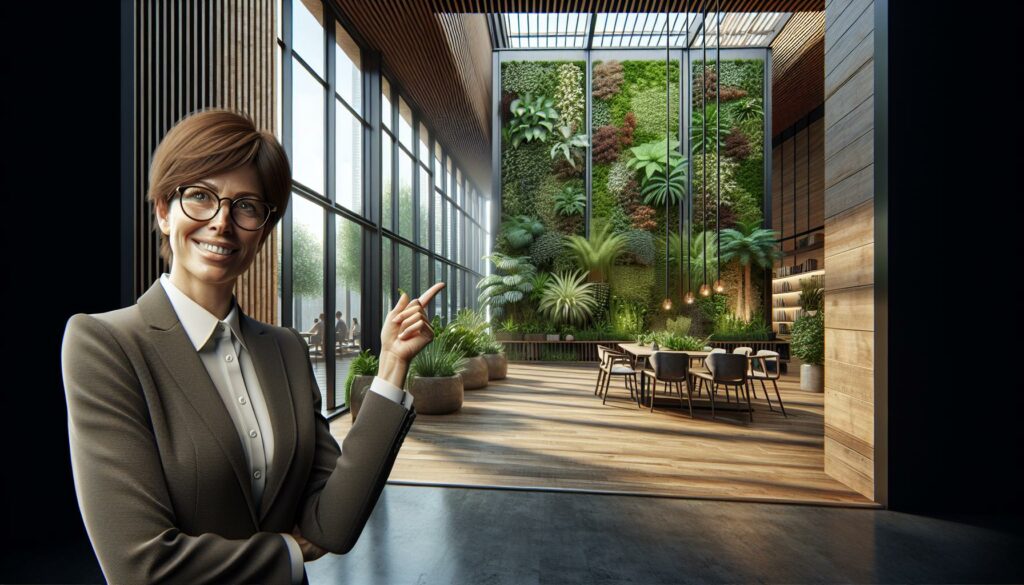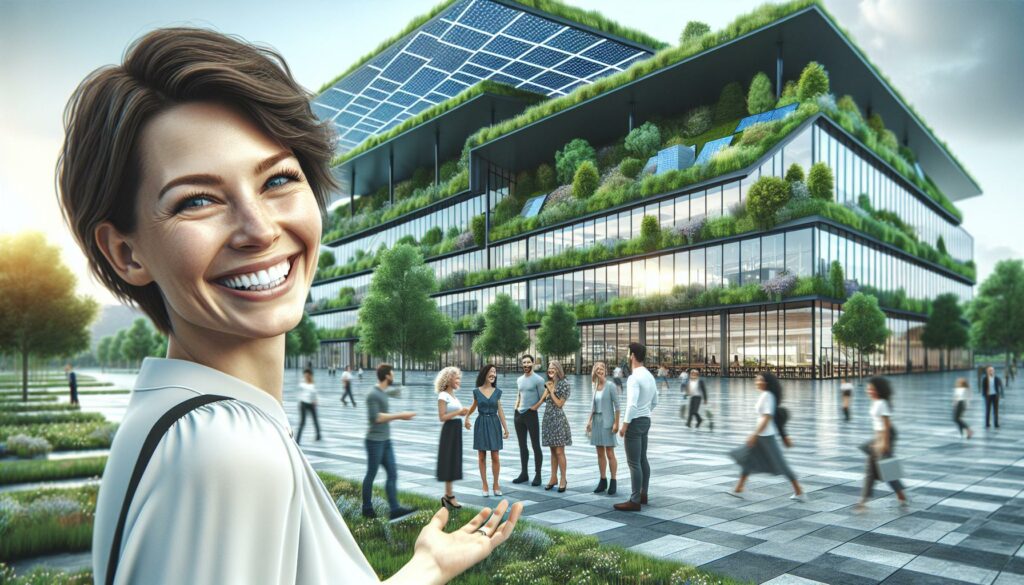In 2023, architectural design is taking a bold leap into the future, blending creativity with sustainability like never before. Gone are the days of cookie-cutter buildings that look like they were plucked straight from a bland blueprint. This year, architects are breaking the mold with innovative designs that not only turn heads but also respect the planet.
Imagine living in a home that feels like a work of art while also being energy-efficient. From biophilic designs that bring nature indoors to modular constructions that make moving as easy as packing a suitcase, the trends are as exciting as they are practical. Buckle up as we explore the architectural wonders that are shaping our spaces and our lives in 2023. Who knew the future could look this good?
Architectural Design Trends 2023
Architectural design trends 2023 emphasize creativity and sustainability. It’s apparent that architects are moving away from traditional and uniform structures. Innovative buildings now captivate with bold aesthetics while prioritizing environmental responsibility.
Biophilic designs emerge as a prominent trend, promoting the integration of nature within urban environments. Incorporating elements like green walls, large windows, and indoor gardens enhances natural light and air quality. Such designs foster a connection between people and their surroundings, contributing to overall well-being.
Modular construction techniques gain traction, offering flexible living spaces and faster build times. These methods allow for efficient use of materials, significantly reducing waste. Increased customization options lead to unique, personalized homes that cater to diverse lifestyles.
Sustainable materials play a crucial role in architectural design this year. Eco-friendly options include recycled steel, reclaimed wood, and low-VOC paints. These materials not only minimize environmental impact but also improve indoor air quality.
Smart technology integration enhances functionality and efficiency in buildings. Systems for climate control, lighting, and security contribute to convenience and resource management. Architects and designers prioritize energy efficiency by incorporating renewable energy sources and advanced insulation techniques.
Overall, architectural design trends 2023 showcase a commitment to innovation and responsibility. Each trend reflects a dedication to creating spaces that nurture both inhabitants and the planet. As these designs evolve, they meet the needs of modern living while addressing urgent environmental challenges.
Sustainability in Architecture
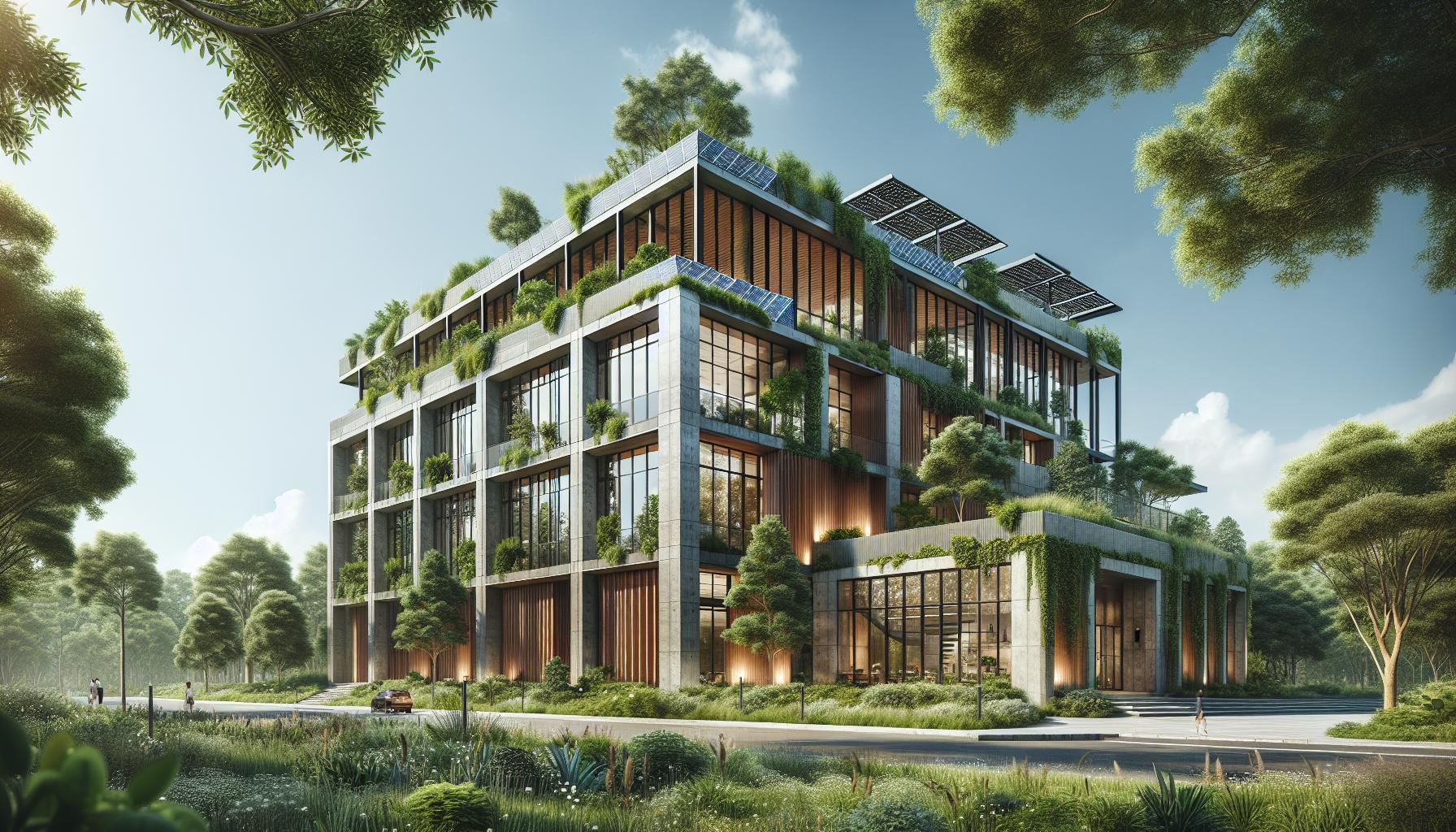
Sustainability remains a cornerstone of architectural design in 2023. Architects focus on minimizing environmental impact while maximizing aesthetic appeal.
Eco-Friendly Materials
Recycled steel and reclaimed wood feature prominently in contemporary designs. These materials not only reduce waste but also enhance durability. Bioplastics and bamboo provide additional options, offering sustainable choices that meet modern building standards. Versatility marks these materials, allowing for creative applications in various projects. Choosing eco-friendly materials strengthens interior environments, improving air quality and overall health.
Energy Efficiency Solutions
Energy-efficient solutions gain traction in architecture this year. Incorporating smart technology simplifies energy management, making homes and buildings smarter. Solar panels generate renewable energy, while advanced insulation reduces heating and cooling costs. Natural ventilation techniques enhance airflow without compromising comfort. Designers prioritize energy-efficient appliances, which contribute to lower utility expenses and reduced carbon footprints.
Technology Integration
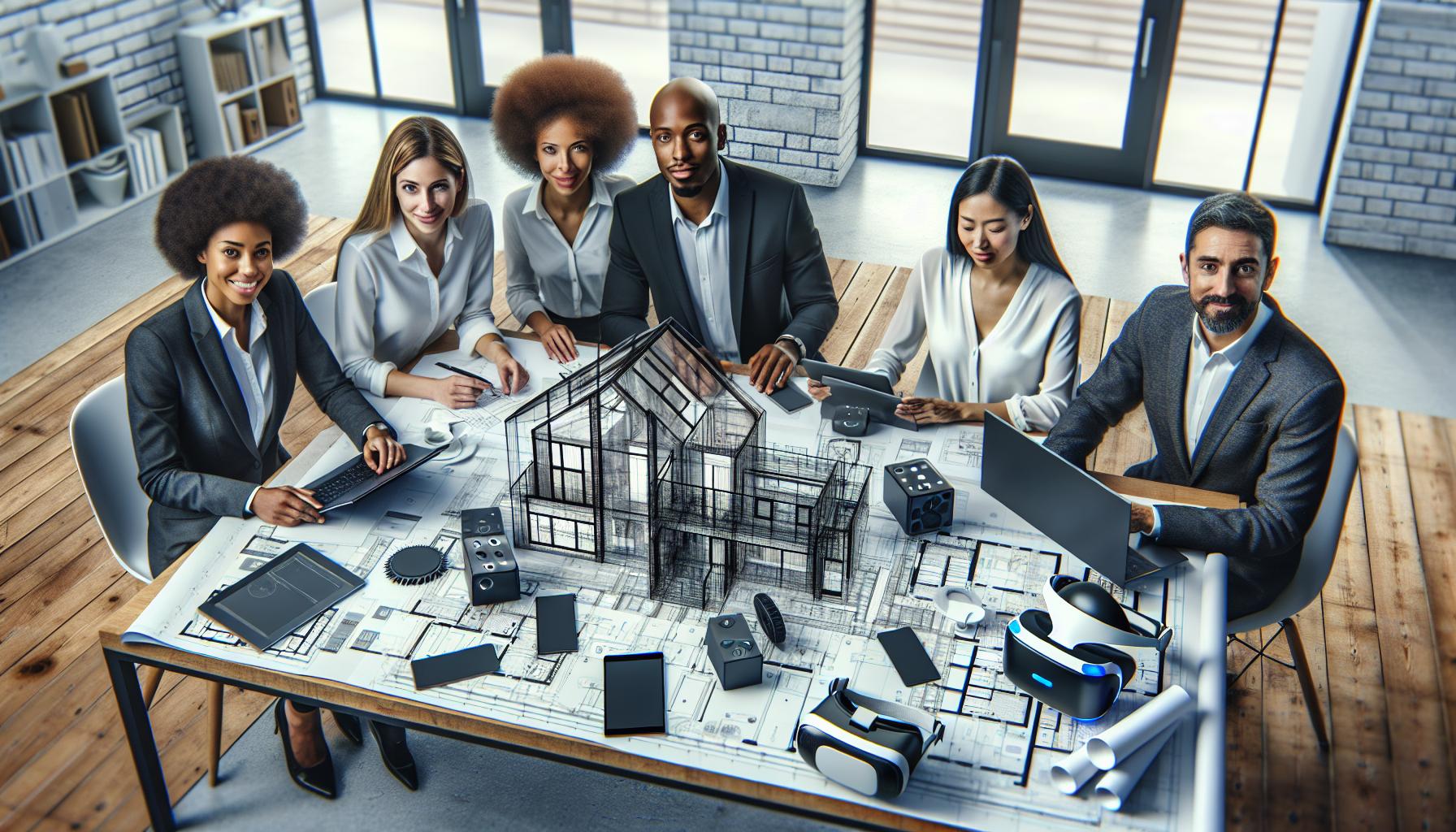
Technology shapes architectural design trends 2023, enhancing functionality and sustainability. Integrating advanced technologies improves the way spaces are used and experienced.
Smart Home Innovations
Smart home innovations elevate comfort and efficiency in modern architecture. Automated systems manage heating, lighting, and security through intuitive interfaces. Integration of IoT devices enables seamless communication between home elements, optimizing energy consumption and enhancing security. Voice-activated assistants allow residents to control home features effortlessly. Implementing energy monitoring systems provides insights into usage patterns, resulting in informed decisions for sustainability improvements. Overall, these innovations not only support convenience but also align with the push for eco-friendly living.
Virtual Reality in Design
Virtual reality transforms architectural design by enabling immersive experiences. Architects use VR to present designs before construction begins, allowing clients to explore spaces in real-time. This technology assists in identifying design flaws and making adjustments early in the process. Collaboration tools leverage VR to facilitate discussions among stakeholders, fostering creativity and engagement. Integration of VR enhances visualization, making complex architectural concepts accessible. Clients feel empowered to make decisions based on realistic representations, ensuring that the final product aligns with their vision.
Biophilic Design
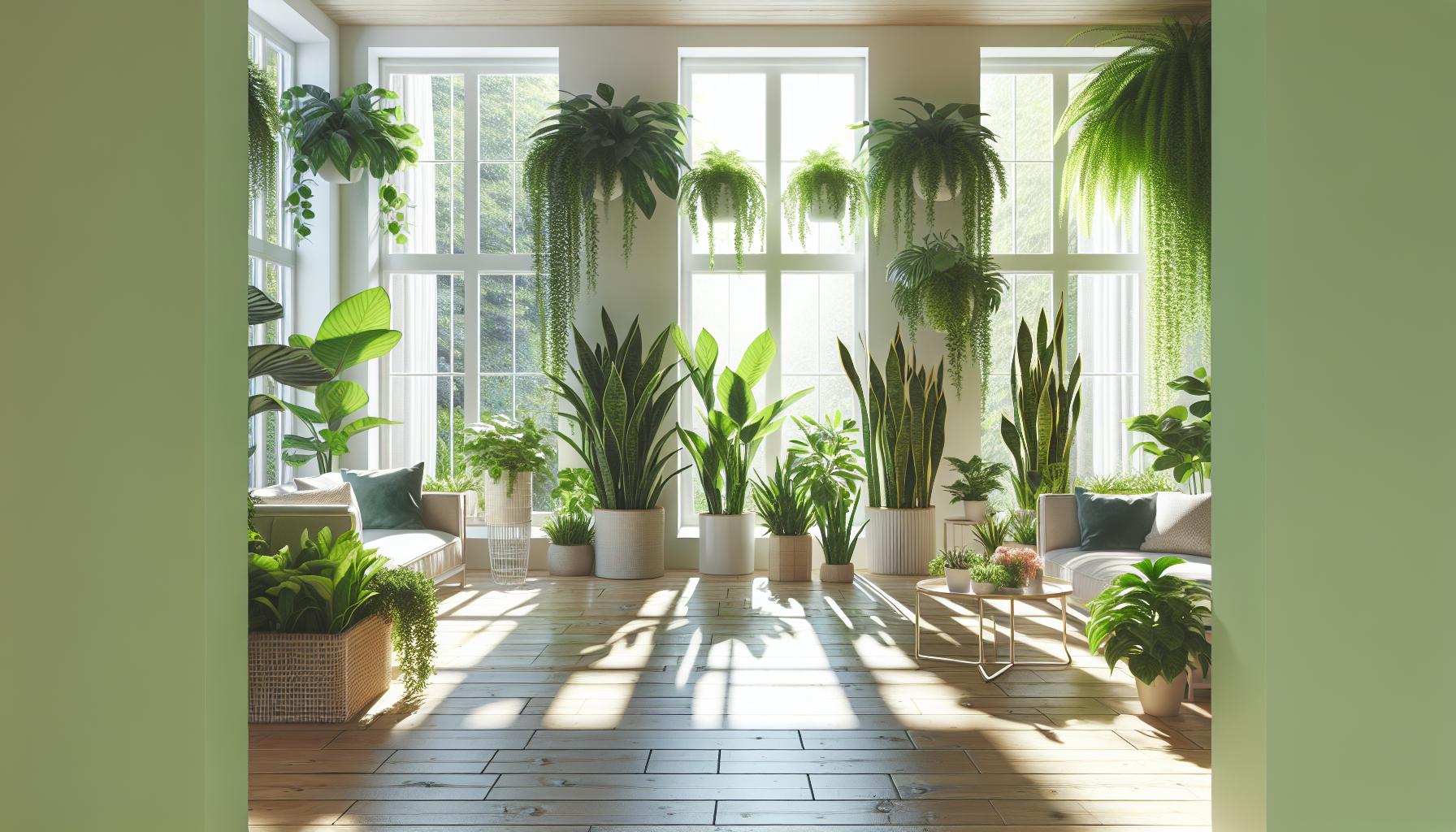
Biophilic design emphasizes a harmonious relationship between built environments and nature. This approach integrates natural elements into architecture, enhancing well-being and connection to the environment.
Connection with Nature
Designers increasingly prioritize natural connections in urban settings. Features like expansive windows and open-air spaces enable sunlight to flood interiors, improving mood and productivity. Incorporating elements such as flowing water, natural materials, and greenery fosters a sense of calm. Spaces that embrace nature stimulate creativity and reduce stress levels, offering retreats from the busyness often experienced in daily life. Enhancing overall well-being aligns with modern ecological values and promotes healthy living.
Indoor Plant Incorporation
Integrating indoor plants transforms spaces into vibrant ecosystems. Common plants like snake plants, pothos, and fiddle leaf figs improve air quality and provide aesthetic appeal. Designers advocate for living walls, allowing greenery to flourish in various indoor settings. Establishing gardens within buildings creates microclimates that contribute positively to indoor environments. Regular maintenance encourages engaged interactions with nature, fostering a sustainable mindset among occupants. Overall, indoor plant incorporation significantly enhances both health and design aesthetics.
Minimalism and Simplicity
Minimalism and simplicity dominate architectural design trends 2023, aligning with the desire for clean aesthetics and functional efficiency. This approach emphasizes fewer elements to create uncluttered environments that promote tranquility.
Clean Lines and Open Spaces
Clean lines and open spaces form the foundation of minimalist design. Architects prioritize straight edges and uncomplicated layouts to cultivate a sense of order. Natural light floods interiors through expansive windows, enhancing spatial perceptions. Materials such as glass, concrete, and wood create harmony, fostering connections between indoor and outdoor environments. This emphasis on simplicity encourages a stress-free lifestyle by reducing visual distractions. In residential settings, open floor plans facilitate easy movement and social interactions while maximizing usable space.
Functionality Over Decoration
Functionality drives design choices in 2023’s minimalist trend. Spaces are crafted with purpose, focusing on practical uses rather than ornamental details. Each design element serves a specific function, enhancing the overall utility of the environment. Furniture selections reflect this philosophy, opting for multi-functional pieces that optimize space. By integrating storage solutions seamlessly into architecture, clutter is minimized, contributing to an organized aesthetic. The intent remains clear: create spaces that support everyday living without excess embellishments.
Color Trends in Architecture
Color trends in architecture for 2023 reflect a desire for connection with nature and a bold expression of individuality. Architects and designers embrace colors that resonate with the environment while fostering creativity.
Earthy Tones and Pastels
Earthy tones dominate architectural palettes, providing warm, grounding feelings. These hues, including terracotta, olive green, and sandy beige, create a sense of calm and balance within urban landscapes. Pastels also gain popularity, offering soft shades like blush pink, muted yellow, and pale blue. Such colors enhance natural light in spaces, making interiors feel more inviting. Designers choose these shades to coordinate with sustainable materials, reflecting an eco-conscious approach while promoting a soothing atmosphere.
Bold Accents
Bold accent colors bring energy and vibrancy to architectural designs. Rich jewel tones, such as emerald green or deep navy blue, create striking contrasts against neutral backgrounds. This trend highlights architectural features, making them focal points in designs. Accents also appear in unexpected places, like brightly painted doors or colorful window frames, which draw attention and spark curiosity. Through the use of bold colors, architects stimulate emotional responses, encouraging lively interactions within spaces and enhancing the overall aesthetic appeal.
Future of Architecture
Architectural design in 2023 showcases a remarkable blend of creativity and sustainability. As designers embrace biophilic principles and modular construction techniques, they’re crafting spaces that prioritize both aesthetics and environmental responsibility. The shift towards minimalism and smart technology further enhances functionality while fostering a connection to nature.
Color palettes reflect a desire for tranquility and individuality, enriching urban landscapes with earthy tones and vibrant accents. This year’s trends not only address the pressing need for eco-friendly solutions but also create environments that promote well-being and harmony. As the architectural landscape evolves, it’s clear that the future is rooted in innovation with a commitment to nurturing both people and the planet.
